How to connect your heart to the redwoods in Oregon
Two fantastic hikes among the Oregon Coast redwoods will have your heart singing in no time. All the details are here, including an interactive map.
I’ve wandered the beautiful Pacific Northwest my entire life, growing in my ability to close out the noise of our modern society. It isn’t always easy, with the realities of life screaming from what seems like every direction. Still, I keep going to find the quiet — forests are a great place to start. Oregon and Washington State are both chock-full of trees, indeed, but some places are more magical than others.
I’ll share with you my own stories of discovery in hopes you’ll embark on your own personalized journey to the mystical quiet of a forest. I recently landed in a land with these qualities that still, a month later, inspire love in my heart — my journey to the Redwoods in Oregon.
If you want to add Oregon redwoods to a longer itinerary and need help planning, consider another article, How to Plan an Epic Oregon Coast Road Trip. Registering for a Zoom travel planning session can also tap into my knowledge–you’ll come away from our meeting with a customized itinerary.

Most people associate Oregon with Douglas fir, for good reason.
The tree loves both water and sunshine and covers the map of Western Oregon and Washington States — even into British Columbia. While many of the old giants were razed to feed the growing demand for housing in the world for the last 200 years, there are still groves with excellent examples of the regal giants — some of which have survived earthquakes, windstorms, and devastating fires… multiple times.
There is a tiny corner of Oregon where the Redwoods thrive, within a 450-mile-long “fog belt” just miles from the California border. They aren’t as giant as the famous behemoths just 90 minutes away in Redwood National Park, but they offer something a little different. Here is my account of visits to two excellent trails that feature Redwoods in Oregon.
My visit to the Oregon Redwoods Trail starts from a northbound journey on Highway 101 (the Oregon Coast Highway heading north from California.
Just inside the Oregon border, Winchuck River Road appears and the turn requires a hard right. The pavement narrows to a gravel Peavine Ridge Road (this is in the Rogue River – Siskiyou National Forest) which winds for a few more miles into a portal that zaps my already spotty cell service.
The gravel and mud combo seems typical for a Forest Service road, and I’m glad I have a midsize SUV that is a bit higher off the ground. I meet a man driving a gigantic Ford 350 pickup and we do a dance with our vehicles — teetering on the ditch — to pass each other. I eventually arrive at the parking area which has a primitive outhouse (no TP or hand sanitizer), a picnic table, and one other car in the gravel lot.
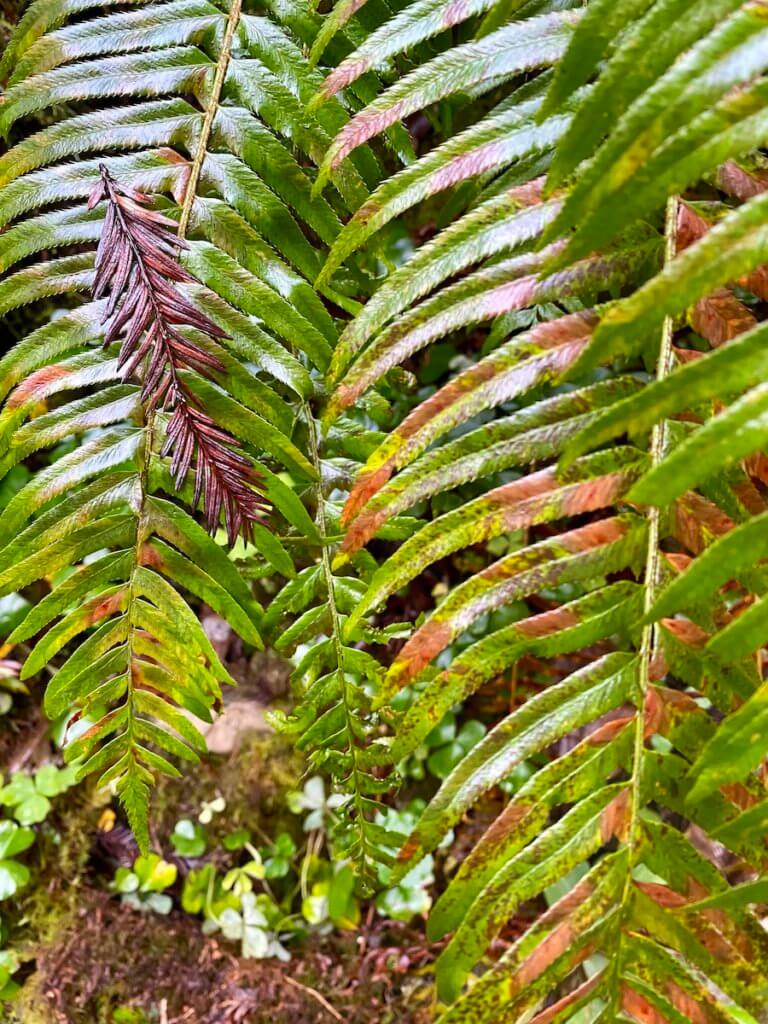
I’ve found that National Forests only charge for parking when they have upkeep, and since this isn’t an example of upkeep parking passes aren’t required. By the way, America the Beautiful Passes (National Park 12 month passes) are valid for places in National Forests that do require fees for parking. And, another housekeeping item for those with furry friends: most National Forests (like this one) allow pets on leashes, while National Parks (ie Redwood National Park) typically don’t allow animals past ten feet of a roadway.
I move anything that could be visible from outside the vehicle just as a precaution and get my gear together. There are breaks of the sun so while I wear my waterproof jacket I decide not to put on my rainpants (I always have them just in case). The trailhead sign reveals two options to experience this magical place:
- Oregon Redwoods Interpretive Trail (#1106) — 3/4-mile loop through a protected botanical area.
- Oregon Redwoods Trail (#1107) — an additional 1.2 miles of steeper terrain.
The sun is already heavy at 3 pm this December afternoon, so I’m not sure how much time I’ll have to enjoy the trails.
The benefit of winter light, especially in the last hours of the day, is the gentle buttery glow that seems to spread over the forest like frosting on a cookie. I wander through thickets of wild rhododendron that must be stunning in the spring flowering season. Sword ferns pop up to say hello. Mushrooms seemed sprinkled in every direction — assorted varieties clinging to any willing surface. The smell of damp, rich earth enters my nose and expands through my body, pumping up my energy.
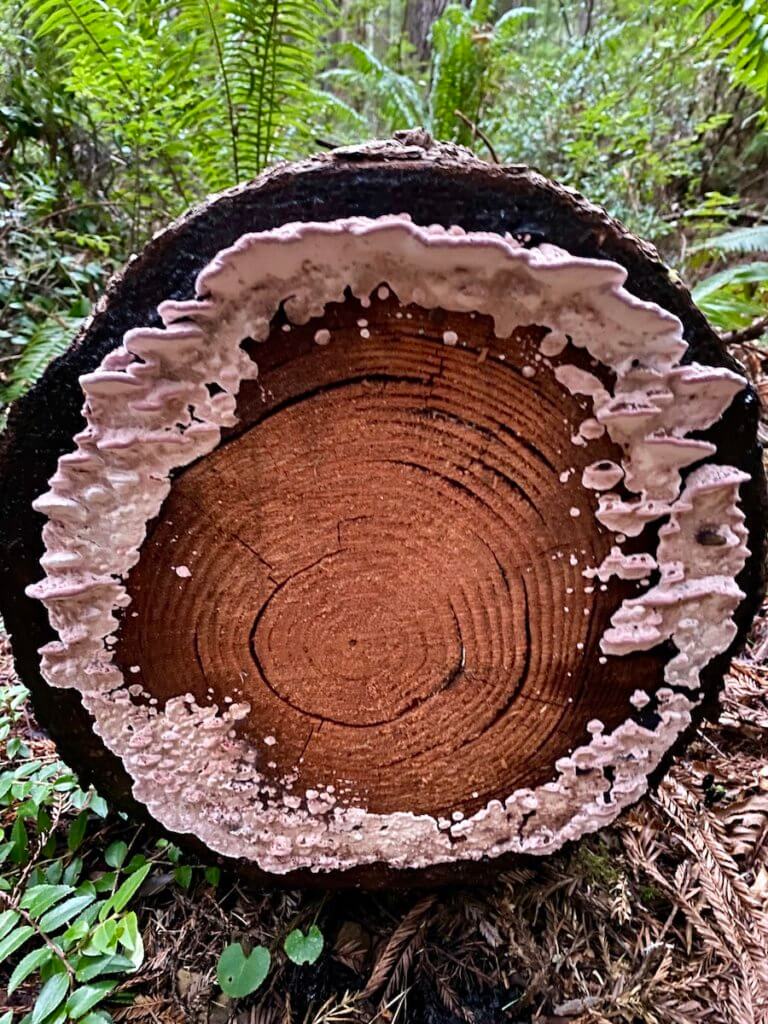
I feel like running through the Redwoods in Oregon, but there are so many things to stop and notice.
The smell of the wood chip path starts to enter my orbit, and I stop to notice the delicate phlox border of the path. The tiny “shamrock” petals effortlessly hold up relatively giant droplets while confident fern fronds lurk from above. The initial part of the botanical trail features a forest of younger coast redwoods, lined up like striped wallpaper — endlessly flowing amidst tanoak and rhododendron.
It’s clear these are not the largest redwoods on the coast, but something about the way the forest melds together, and the quiet pondering of this unassuming trail, creates a bigness emerging from within. A magically wild connection forms with this forest, as my eyes finally fix upon a giant up ahead.
Near where the trail parts (to form the loop), the magnificent beings rise up into a flowing canopy of vibrant green. Coast redwoods, at 373 feet, are the tallest trees in the world — even taller than the giant Sequoia. I almost fall backward following the giant tree trunks towards the sky. I meet up with a massive coast redwood about ten feet in diameter. From the trail, I’m able to touch the thick chunks of protective bark. My new friend has seen it all over the years — rain, snow, extreme heat, forest fires, windstorms, woodpeckers, bears, indigenous people (who use the wood to make plank houses and dugout canoes), and logging of neighbors.
The trail meanders through a mix of old and young trees, and at the trail sign, I opt to venture onto the longer, steeper trail. This area feels more wild and untouched, with salal, wild huckleberry, and twisty rhododendron weaving into the patchwork of moss dangling from tanoak branches. All this underworld forms a foundation for the giants to thrive high above.
While the path is well maintained and generally smooth, the grade changes require sturdy shoes and a general good mobility and fitness level to navigate the additional 1.2 miles. I find more giant redwoods dramatically hanging on the side of steep banks above a babbling brook, and the trek back up the hill to the parking area gets my heart racing. What a great introduction to the Southern Oregon Coast and the Redwoods of Oregon.
Redwoods in Oregon — Day 2
After spending the night at Beachfront Inn in Brookings, I venture out for a second day exploring the coast redwood forests in Oregon. This time, I follow a road just to the north of the Chetco River (which meets the Pacific Ocean in Brookings). Although information for the Redwood Nature Trail is murky, I know it’s just up the way from Loeb Park and set my sights on North Bank Chetco River Road.
The drive is an easy 9 miles and along the way, an overhang of vibrant Myrtlewood Trees frames in the rural Oregon road. A pullout area provides the perfect opportunity to stop and take in the intoxicating aroma of a unique grove of trees.
These interesting beings only grow between the Umpqua River (Reedsport, OR) and the Oregon/California border and have a scent very similar to laurelwood or bay leaf. By the way, there is an exquisite Myrtlewood collection with some 200-year old beauties at nearby Alfred A. Loeb State Park.
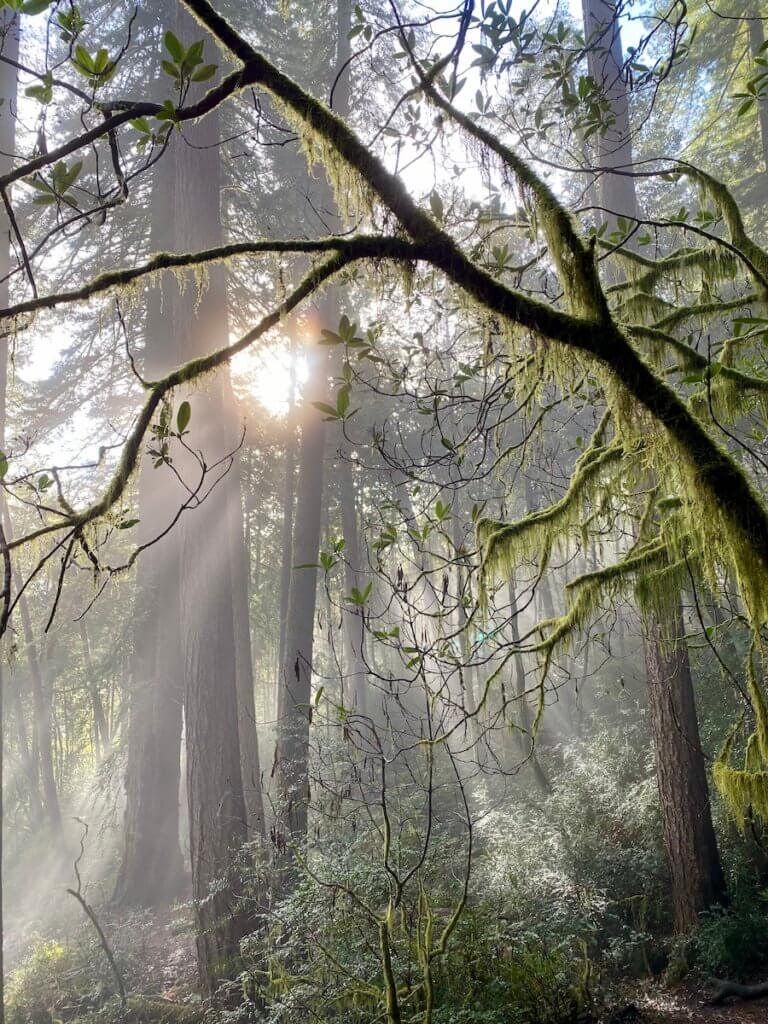
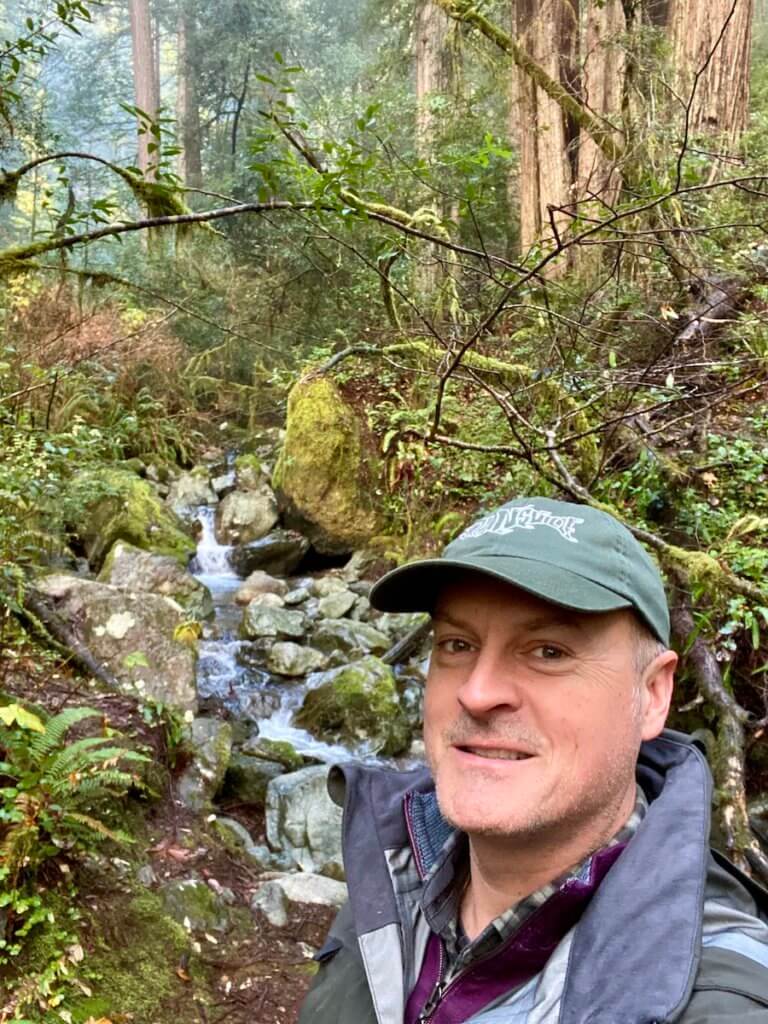
Redwood Nature Trail — an Oregon delight of organic integration
Where the Oregon Redwoods Trail provided the striking images of redwoods — all lined up in union — reaching up to the heavens, Redwood Nature Trail is a lesson on integration. Only about ten miles farther north, the climate changes just enough to pull in more familiar Oregon species of trees.
It’s a frosty coastal morning, and I park my car near the Rogue River – Siskiyou National Forest sign and survey the paper map, wrapped in plastic and stapled to the trailhead board. The Redwood Nature Loop is 1.1 miles and includes interpretive signs (the maps were all gone and I had no cell service to look it up online) #1-15 and three-foot bridges.
Nature’s goodness gets going quickly, and once I’m past the muddy dirt roadway (wear sturdy shoes) a wonderland for the senses appears. Heavy moss clutches to dormant maple trees, forming neon green stick figures playing together above a fiercely rushing creek. Smells of crisp air mixed with decaying leaves remind me of nature’s cycle of life. Even though this might be considered the dead of winter, the little world ahead of me feels very much alive.
From the footbridge, all the elements of nature are present. Frosty cold creates fire in my nostrils. Air flows through the needles of giant coast redwoods towering above. Water rushes beneath my feet. The smell of rich earth surrounds me on all sides.
Redwoods in Oregon — Mother Earth’s collage of exquisite balance
A landscape architect wouldn’t be able to craft such a perfect integration of plants and trees. The way the redwoods, Douglas fir, and maple hold equal command of the vast canopy makes me feel like I’ve entered into a new kingdom. Meanwhile, tanoak, Myrtlewood, and a few enthusiastic rhododendrons layer into the middle spaces. Large rocks build up an elevation gain while an assortment of forest ground cover, including salal, licorice fern, and phlox, ensure no space is without texture. I’m struck by the way it all effortlessly flows together.
It takes me twice my usual amount of time to get through this gem of a Nature Loop. I stop every few feet to marvel at a new mushroom popping up, the angle of the trees, or birds singing. The final stretch near the roadway (or the start depending on which way you go) seems to have experienced a wild windstorm that blew over an entire grove of trees. While it doesn’t look pretty compared to the rest of the walk, I’m reminded that nature’s cycle will allow the severed trees to serve as food for future generations.
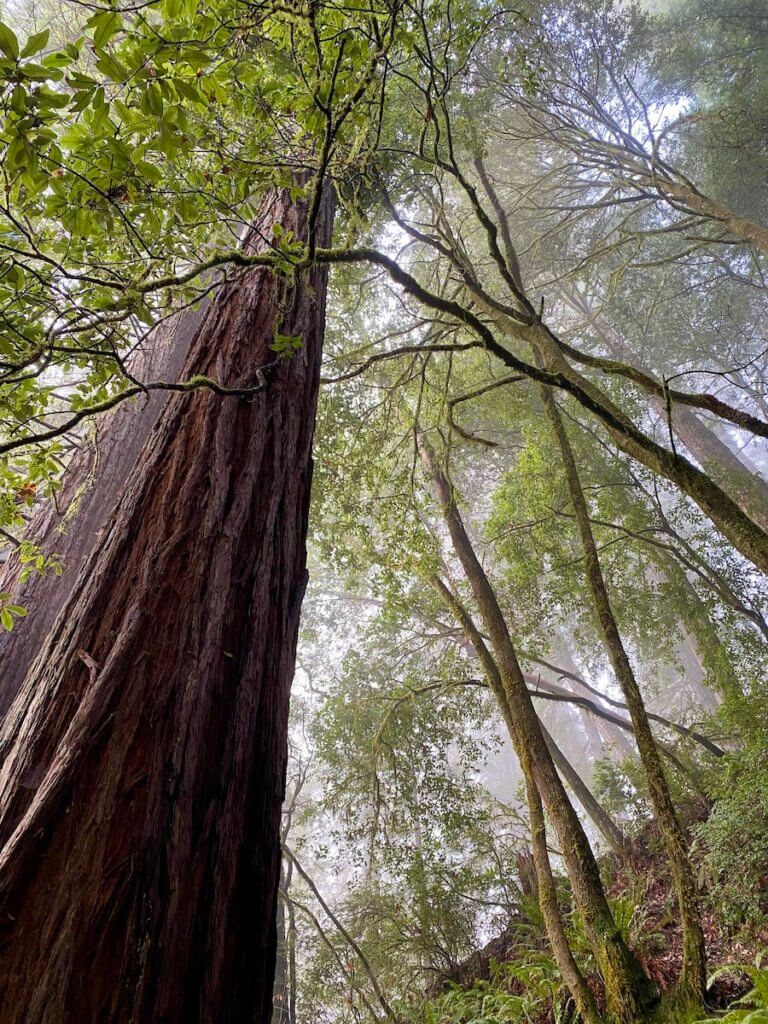
My exploration of the Southern Oregon Coast is made much brighter with these two nature-steeped experiences and I’m grateful for the time with such majestic giants. Redwoods capture the imagination of people from all over the world, usually as “The California Redwoods”, and for good reason. I appreciate that while the redwoods in Oregon are not the largest, the forest ecosystems offer such quiet granduer. Fewer people visit here, allowing the spirit enough space to quickly connect. Especially because both trails are conveniently located near the Oregon Coast Highway (101).
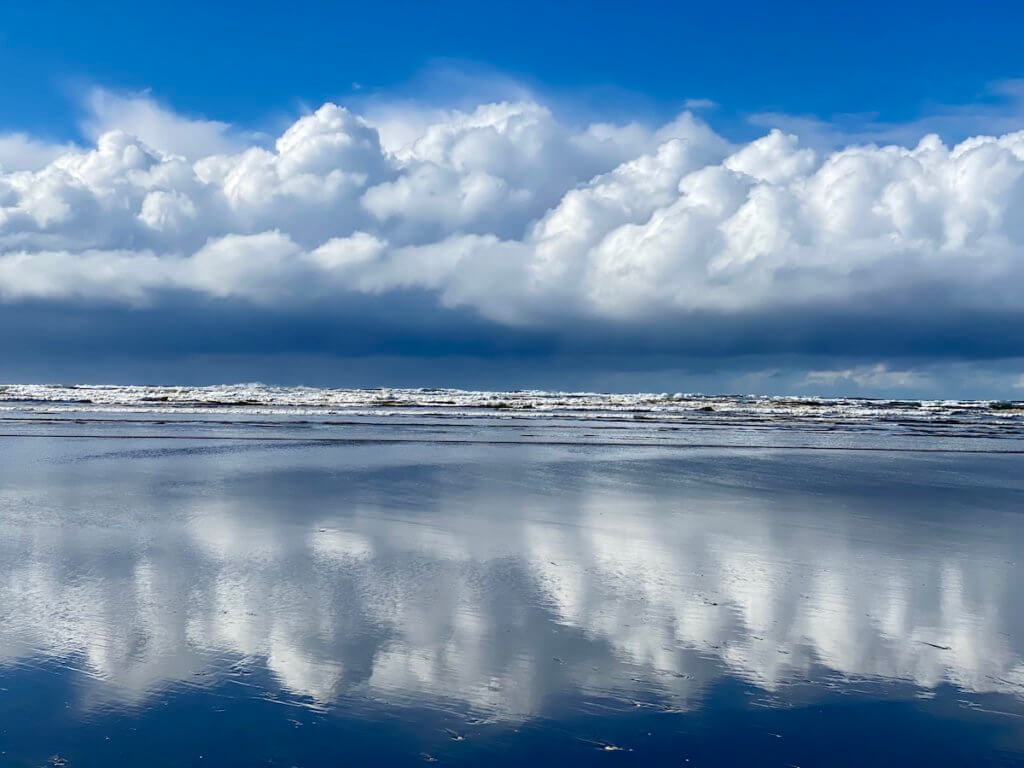
21 Oregon Coast towns
My guide to 21 Oregon Coast towns, including an interactive map. Beaches, things to do, and unique identities.

The best Oregon Coast towns to visit
My list of the best Oregon Coast Towns to visit in each of 10 different categories — beaches, scenery, things to do. Includes an excellent interactive map.
Interactive map of Redwoods in Oregon
Yes, the redwood trails are on this map… plus much more to help inspire just the right trip for your soulful travel along the Southern Oregon Coast. Don’t forget to save this for future reference.
Remember, in this region of Oregon cell phone service is unpredictable — just depending on the carrier — plan ahead.
Have more planning questions?
How to get to the Oregon Coast
The Southern Oregon Coast is rather remote… which allows pristine nature to take the center stage. The following guidelines should help you plan the best way to visit. Keep in mind public transportation really isn’t viable — a vehicle (or bike) is all but required.
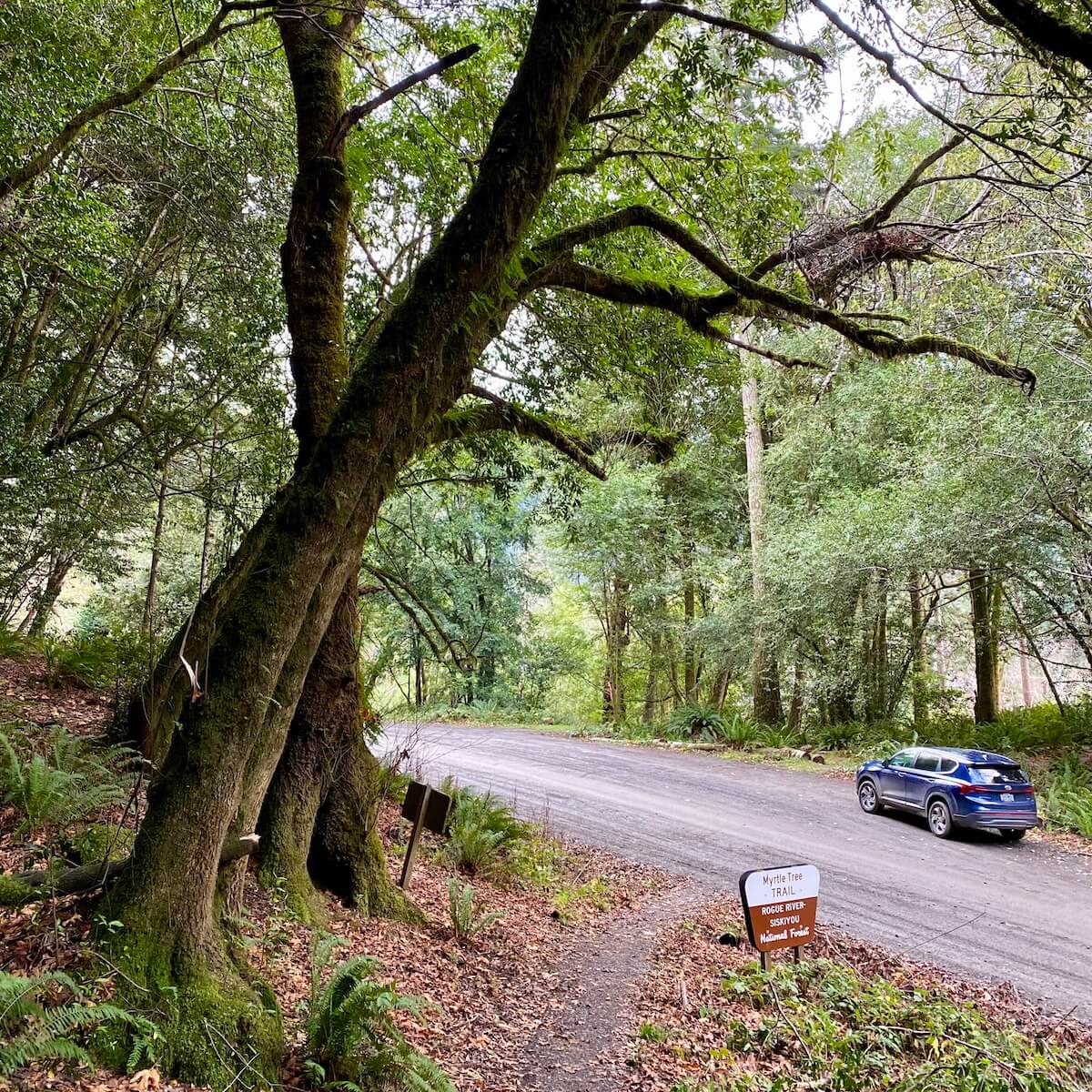
By vehicle
Be realistic about driving distances.
Estimated drive times to/from Brookings:
Coos Bay (coastal hub): 2 hours; Medford (closest metro area): 2.5 hours; Portland (closest international airport): 6 hours; San Francisco: 7 hours; Seattle: 9+ hours.
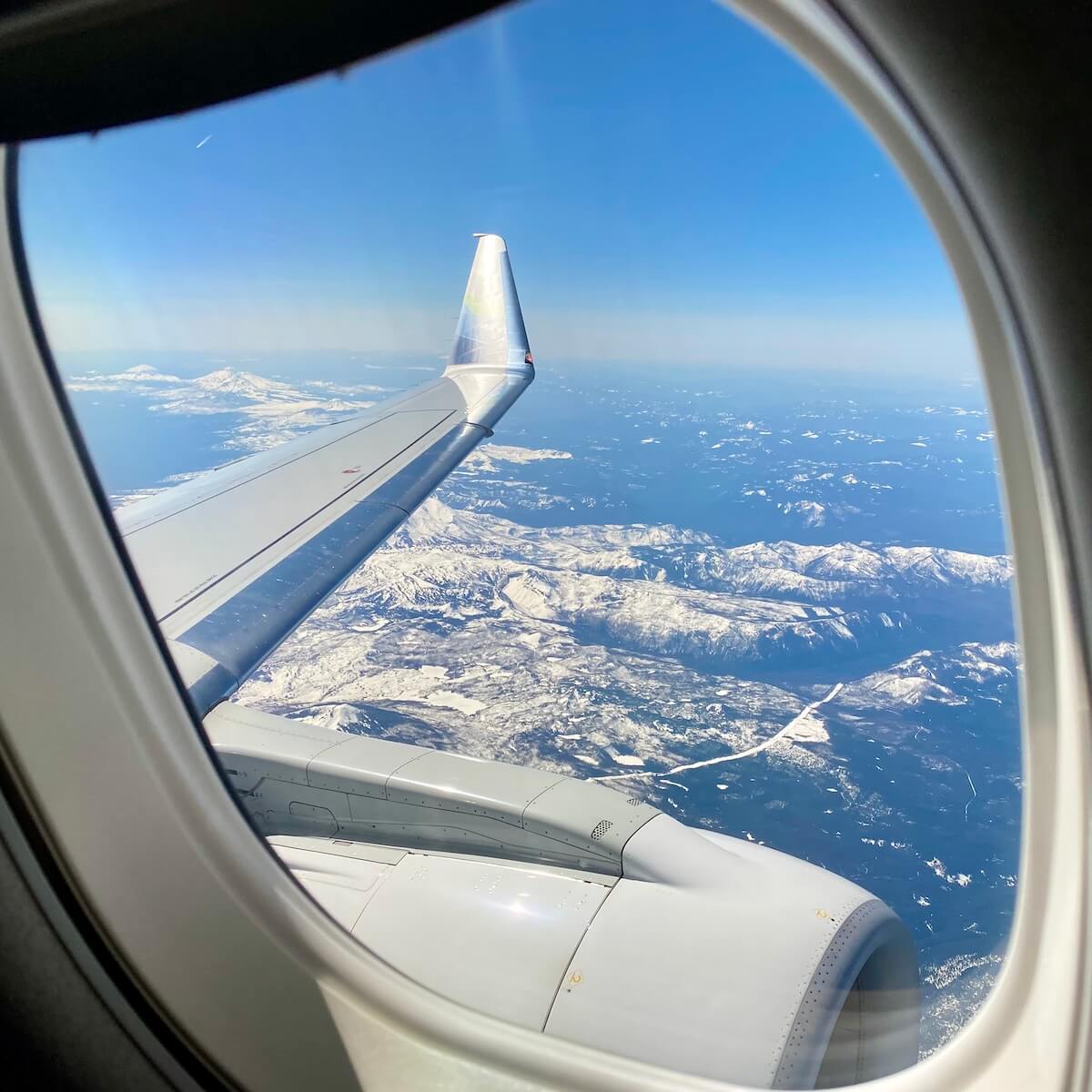
By air
Fly into Medford, Oregon (MFR).
Most major airlines serve this airport from their hubs (Seattle, SFO, LAX, Denver, etc.) as well as rental car companies. It’ll take about 2.5 hours to drive to/from Brookings. Stop in Cave Junction to eat.
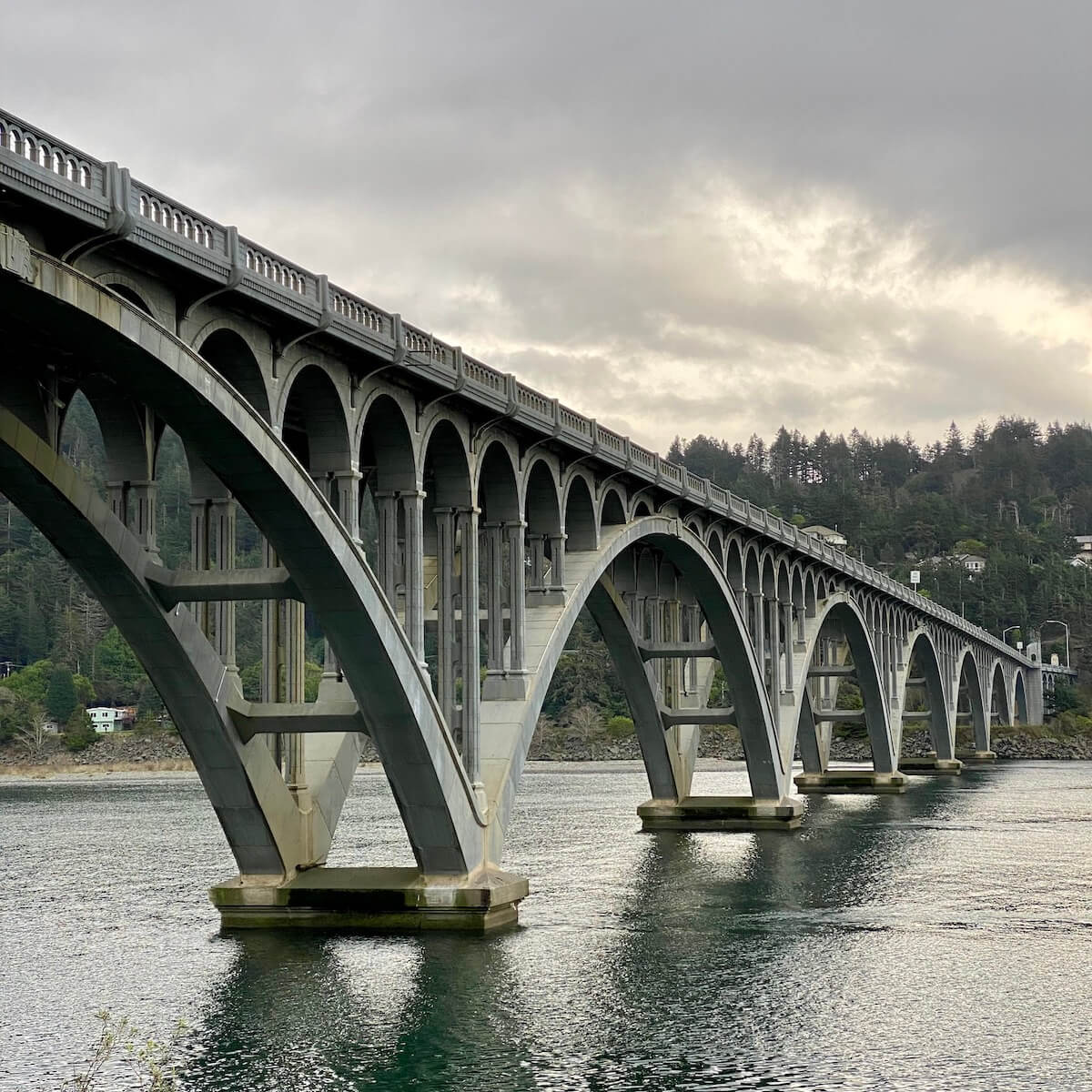
Road trip Highway 101
Add at least one night in this region.
Many people want to race through this section of the Oregon Coast to get to/from the Redwoods. That’s a shame, as some of the most beautiful scenery is located here. Plan an overnight in Brookings, Gold Beach, or Port Orford.
